Exhibition Opening: Wondrous Machines: Hero of Alexandria’s Ancient Automata
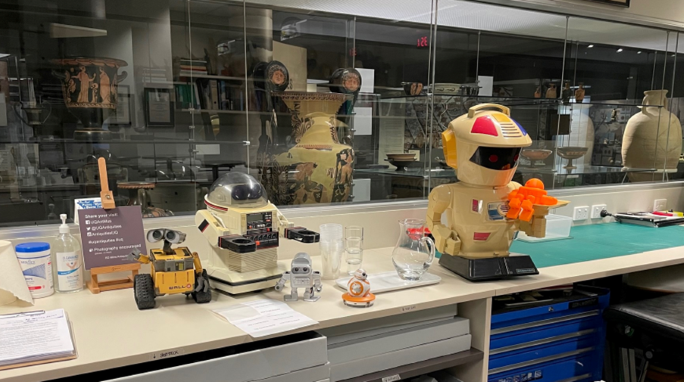
On the evening of October 7th, we were very excited to open our major exhibition ‘Wondrous Machines: Hero of Alexandria’s Ancient Automata.’ Not only is the exhibition the first of its kind for the R.D. Milns Antiquities Museum, bringing together colleagues from across the University from Robotics, ITEE, and Classics and Ancient History (UQ and Exeter), but it is the first major exhibition opening since COVID. We were also very lucky to have some special guests courtesy of Prof. Lisa Featherstone and her partner Craig Macdermid. Craig not only brought along some of his amazing collection of robots, but demonstrated their technologies, including the miraculous Rubik’s cube-solving robot. R2D2 was another favourite, providing many photo opportunities for visitors of all ages. Thank you both!

But why, I hear you ask, were modern robots part of the exhibition opening? Wondrous Machines brings to life Hero of Alexandria’s first century CE Dionysiac shrine, an automaton, a miraculous ancient robot: in his treatise On Making Autamata, Hero gives details of how his mobile shrine could be programmed to do several self-automated movements, including light a fire on the altar, spurt milk and wine from the figure of Dionysus, make the noise of clashing cymbals as maenads danced around the altar, and auto-propel. Based on drawings created by Dr Duncan Keenan-Jones in 2016 as part of a Leverhulme -funded project at the University of Glasgow, we partnered with Prof. Pauline Pounds her team from Robotics at UQ and local artist Michael Eastwood to recreate a 3D model of Hero’s automaton.
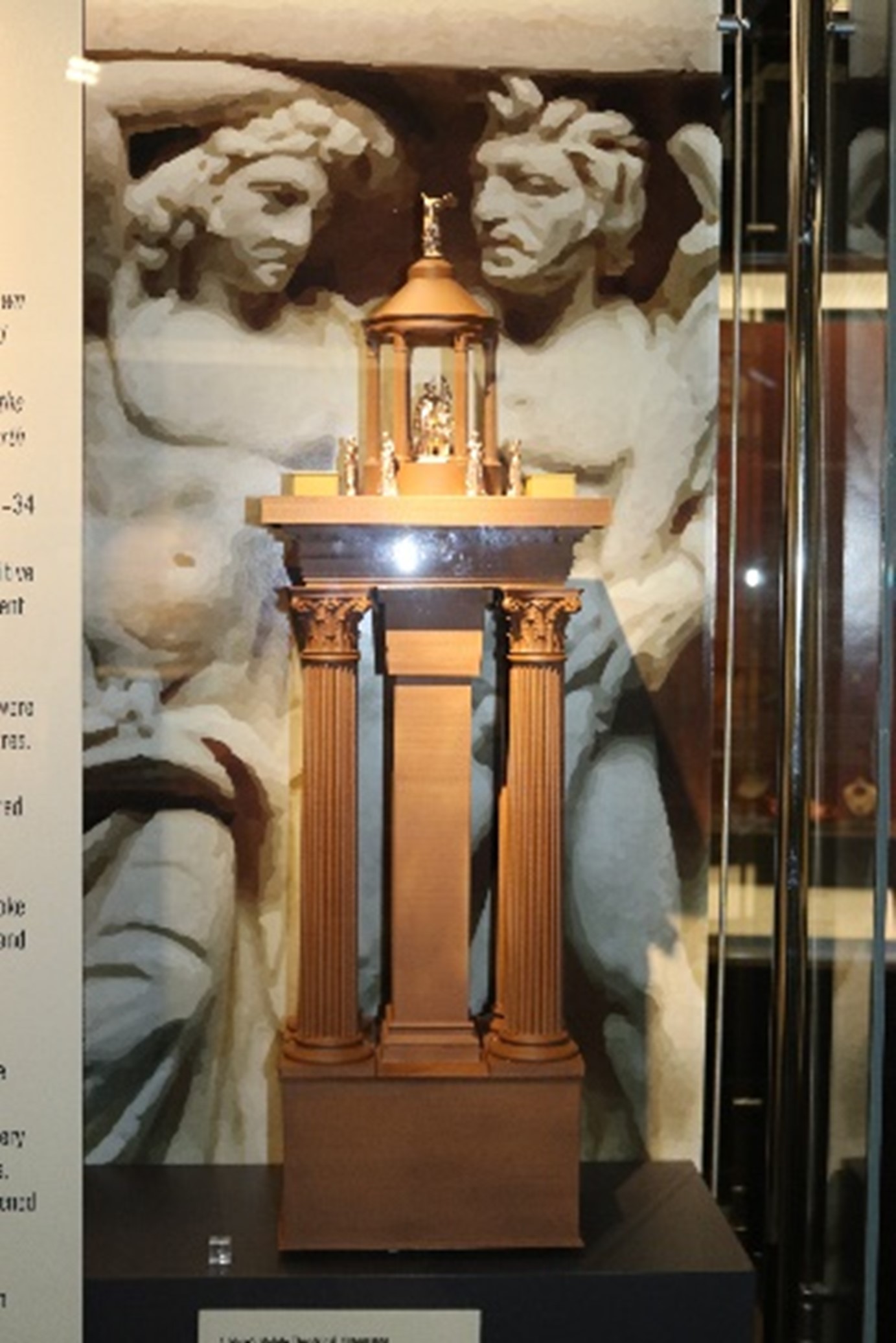

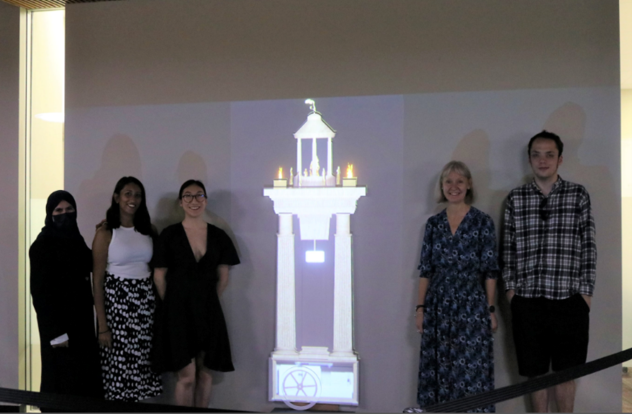 Dr Marie Boden and her team from ITEE created an animation of the shrine with its falling weight, designed to propel the altar forward. They have also created animations of the mechanisms explored in the exhibition, which are available via ipad kiosks alongside the 3D printed components themselves in the Exhibition.
Dr Marie Boden and her team from ITEE created an animation of the shrine with its falling weight, designed to propel the altar forward. They have also created animations of the mechanisms explored in the exhibition, which are available via ipad kiosks alongside the 3D printed components themselves in the Exhibition.
So why animations and 3D models?
The three main aims of the exhibition are:
- To understand how simple components were used in antiquity to create complex machines.
 A well as a scale model of the altar, basic components of several mechanisms that powered the altar have been 3D printed. We want viewers to think more about both how the more complex mechanisms in the shrine operated, and to realise that many things we take for granted today, such as taps, originated thousands of years ago
A well as a scale model of the altar, basic components of several mechanisms that powered the altar have been 3D printed. We want viewers to think more about both how the more complex mechanisms in the shrine operated, and to realise that many things we take for granted today, such as taps, originated thousands of years ago
2. To explore how these seemingly simple components have inspired modern machines and robots today.
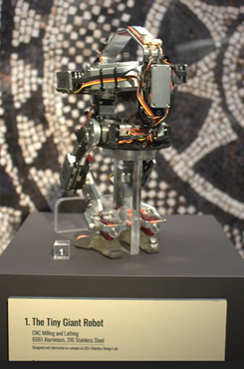 In the exhibition, we ask how ancient technologies such as ropes attached to falling weights, pulleys, and wheels have inspired modern theories and technologies such as the gyroscope technology of UQ’s TGR (Tiny Giant Robot).
In the exhibition, we ask how ancient technologies such as ropes attached to falling weights, pulleys, and wheels have inspired modern theories and technologies such as the gyroscope technology of UQ’s TGR (Tiny Giant Robot).
3. To understand how automata such as Hero’s Dionysiac shrine inspired wonder in the people who engaged with them in the ancient world.
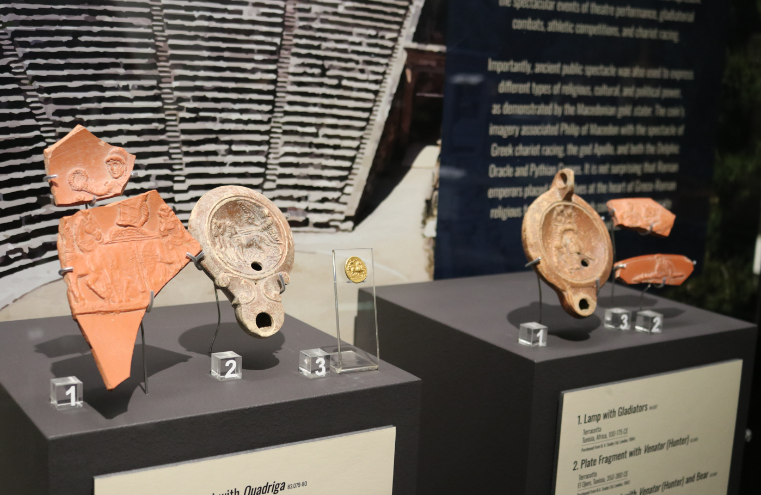 We use both ancient artefacts and 3D models to think about the ancient political, social, and cultural contexts in which different types of automata were used. It is important to understand why they were considered wondrous in these contexts, and how this was achieved. This gives us the opportunity also to explore the exciting fields of sensory perception, experimental archaeology, ancient and modern philosophical influences and developments, and ancient and modern spectacle and wonder.
We use both ancient artefacts and 3D models to think about the ancient political, social, and cultural contexts in which different types of automata were used. It is important to understand why they were considered wondrous in these contexts, and how this was achieved. This gives us the opportunity also to explore the exciting fields of sensory perception, experimental archaeology, ancient and modern philosophical influences and developments, and ancient and modern spectacle and wonder.



